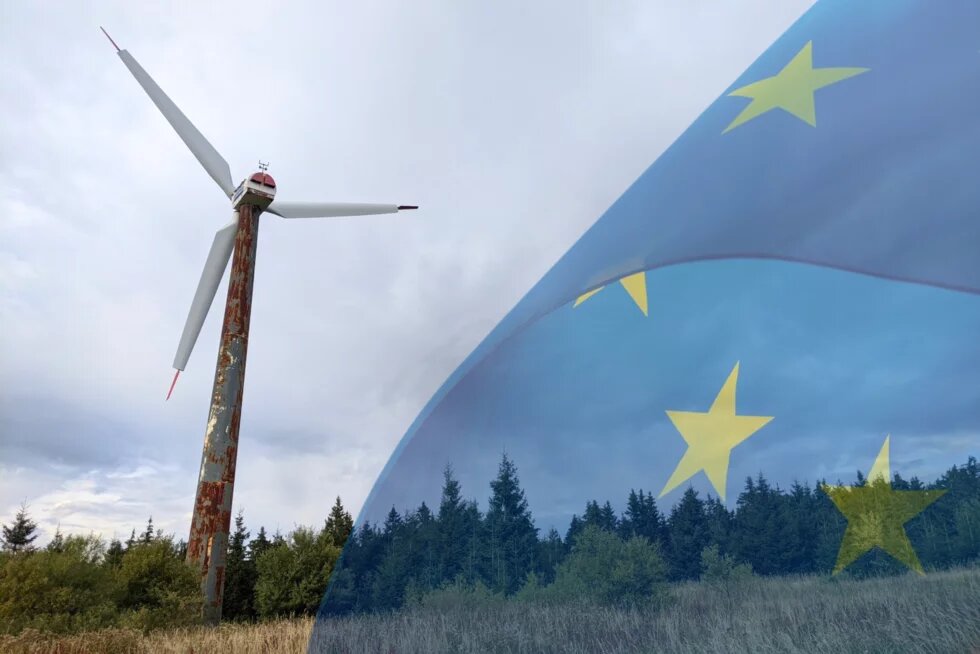In the Czech Republic, the environment remains sidelined as a policy issue in comparison to many other EU Member States. While there have been some positive developments thanks to EU measures and financial support, numerous challenges remain unresolved.

The text was published in the biweekly magazine A2 in an issue titled "Central European Dreaming about Europe," created with the support of the Heinrich-Böll-Stiftung Prague office.
In a time that is not particularly favorable for environmentalism, I like to remember the spirit that prevailed in Czechoslovakia right after November 1989, when caring for the environment was a given and restoring it was a major goal of the re-established democracy. Czechoslovakia, economically reliant on heavy industry, had struggled with forest degradation caused by acid rain from power plants, and swimming in her rivers was unthinkable. In fact, protests over air quality in the Teplice region helped to spark the Velvet Revolution.
However, the revolutionary atmosphere where environmental quality was a priority for both civil society and the political representation has been dampened by rampant capitalism and the push for a free market. Admittedly, a series of protests were organized in the 1990s against the destruction of Libkovice due to lignite mining; opposing the construction of the Temelín nuclear power plant; against the cutting down of trees in the Šumava National Park which were severely affected by a bark beetle infestation; and resisting the expansion of mining in Horní Jiřetín. From 1992 onward, though, an economic pragmatism gained ground that viewed environmental activists as extremists. After the Velvet Divorce, under the governments of Václav Klaus and Miloš Zeman, access to a high-quality natural environment in the Czech Republic became something that needed to be earned economically. It became evident that the divide between the old and the new regimes would not be as profound in this respect as many had imagined during the revolutionary fervor.
Europe for the climate
Fortunately, the Czech Republic’s preparations to join the EU provided an impetus for stronger environmental protections starting in 1996. Perhaps the most noticeable outcome was in waste management: illegal dumps vanished, and Czechs became adept at sorting waste. However, the most important aspect was the EU’s air quality standards.
The original motivation for European integration was the need for a common coal and steel market rather than concerns about nature, let alone climate. However, from 1973 onward, multi-year environmental action programs emerged which shaped both legislation and EU objectives in this area. As is well known, sustainable development, carbon neutrality, and a commitment to keeping the Earth’s average temperature from rising by more than two degrees Celsius are key concepts in current climate policies. These concepts need to be translated into action, though. Prior to the Copenhagen Summit in 2009, the EU set out its targets: to reduce emissions by 20 percent and increase the proportion of renewable energy sources in energy consumption by 20 percent, both by 2020. Originally deemed ambitious or even unattainable by some, these goals were met, serving as proof that long-term European climate policy stands a chance of success.
Given that the Czech Republic was already a full-fledged Member State in this period, EU legislation provided assistance in navigating the conflicts between environmental protections and development of the economy. Yet, by the end of the 2000s, a number of unresolved structural issues persisted. These included the high-energy intensity of industry, the high carbon dioxide emissions, the poorly-structured landscape, the unnatural forest compositions and overpopulation of game, old environmental burdens, and the loss of agricultural land due to development. Furthermore, the shared European space introduced some new, unexpected challenges, such as the illegal dumping of waste from Germany in the Czech town of Libčeves in 2006.
Subsidies and the Green Deal
Environmental quality is not solely determined by laws protecting endangered species and unique habitats, or by regulations governing air and water quality. Financial support, facilitated through funds and subsidies, also plays a crucial role. In the Czech Republic, this support mainly comes from the EU’s Innovation Fund promoting renewable energy technologies, among other things, or from the Modernisation Fund, which is financed by emission allowance revenues. The emission allowance trading system established in 2003 enables producers to pay for emissions released to the atmosphere while the volume of permissible emissions is gradually reduced, thereby increasing the price of such allowances. (Incidents such as the 2011 theft of allowances worth €30 million by hackers in the Czech Republic and other countries hopefully will not happen again.[AG1] )[K2] One of the latest EU initiatives, the Recovery and Resilience Facility, addresses the economic downturn caused by the pandemic. Operational Programme Environment and Operational Programme Just Transition are also widely used in the Czech Republic.
Apart from the EU Cohesion Policy, which balances out the socioeconomic differences among the regions of the EU, the Common Agricultural Policy is a cornerstone of the European economy. Since 1957 this policy has aimed at increasing agricultural production, stabilizing markets, and ensuring a certain standard of living in rural areas. However, it is also the EU’s most controversial policy, with the financial resources needed for its implementation accounting for about one-fourth of the EU’s total budget. Recently, in all European cities including Prague, we have witnessed the fact that agricultural policy is a battleground, where the need to manage the landscape – adapting it for climate change and utilizing it in the processes of carbon sequestration and water retention – clashes with the interests of (mainly large) agricultural businesses. The convoys of tractors protesting across the EU have succeeded. The landscape protection measures which were carefully introduced over the last few decades seem to have been forgotten in an instant. Meanwhile, the Czech landscape is being devastated by erosion, a long-overlooked issue, and by high pesticide concentrations in groundwater.
Besides significantly loosening the rules for agricultural land management, the EU has started a debate about its new climate target for 2040, which is expected to aim for a 90 percent reduction in greenhouse gas emissions compared to 1990 levels. Hopefully, the elections to the European Parliament in June will not curb this ambition. The European Green Deal and European climate policy in general, alongside migration and the war in Ukraine, have become key topics of the election. The political tug-of-war is dividing the public into those who consider the current pace of transformation too slow and those who fear that the transition to renewables and a green economy will jeopardize their social situation. However, the calls to halt the Green Deal might be louder than they are serious. Take, for instance, the statements of Andrej Babiš, the current leader of the opposition and former Prime Minister, who is well aware of the significant funding that green transformation is bringing to both the Czech Republic and his own enterprises. It is also worth mentioning that three years ago, the European Parliament and the Member States passed the first European climate law, setting a legally binding target of climate neutrality by 2050.
Where can we improve?
At the end of April 2024, the Czech Environment Ministry issued a press release reflecting on the 20 years of Czech EU membership from an environmental perspective. The benefits of EU legislation and funding were summed up in several figures: For example, from 2003 to 2023, the number of very polluted or heavily polluted watercourses dropped by one-third; the number of wastewater treatment plants increased by one-half; the emission limits for the highly carcinogenic chemical benzo[a]pyrene are now exceeded in only 2% of the Czech Republic, a significant improvement from the past when the burning of low-quality coal caused widespread benzo[a]pyrene pollution; and the acreage of naturally regenerating forests is growing in size.
Where can the country improve? Take air quality, for example. While the share of renewables in the Czech Republic is 14 percent (Eurostat, 2022), the EU average is nearly 40 percent, and legislation to foster at least some progress in this area has only been in place for a few months. Another major issue, as already mentioned, is agriculture: Czech land is among the most affected by soil drought. The biggest problem, however, is the disconnect between the public and the political leaders. According to a 2023 Eurobarometer study, four in five EU citizens view climate change as a serious problem, but less than half of the people in the Czech Republic share this concern. This is largely due to a lack of information on climate policies among Czechs, a situation that unfortunately also affects many of our MPs. Effective legislation and other climate measures require public support. Hopefully, Czech political leaders will soon recognize the need for a factual discussion of this, unburdened by the culture wars. Perhaps we could even occasionally set our own climate ambitions in the Czech Republic, rather than relying solely on the EU to do it for us.


